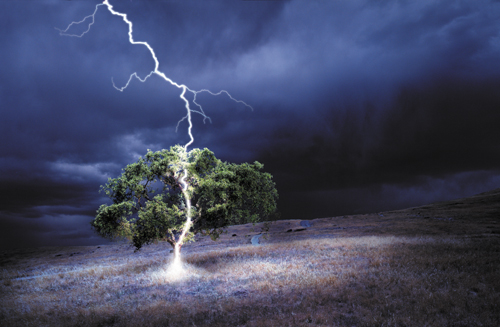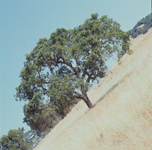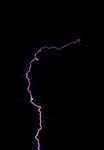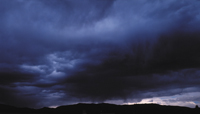How DO they do it? ‘Stock Photo Guy’ and resident guru John Lund takes us behind the scenes.
Creating a fine art stock image for Getty Images

Siri Stafford, my art director at Getty Images at the time, suggested this stock image for me to create. She asked me to make the image because she thought my specialty of using Photoshop to create conceptual stock images made me a logical choice for the job. I truly loved the idea; but what the heck would lightning hitting a tree really look like? I turned to that technological development that has so radically changed the world of commercial photography…the internet. I simply typed in to Google’s image search “lightning and tree”. In just a few minutes I had found some obviously amateur images…but ones that were nonetheless stunning actual images of lightning hitting trees. Now I had something to work towards.
In my mind I pictured a lonely expanse of land with a single oak tree. A lightning bolt is caught as it hits the tree and illuminates the scene around it. The bolt travels down the trunk of the tree illuminating the leaves both from above and from behind at the same time. The sky is dark from storm clouds gathering at dusk.
Photographing the oak tree

There are many oak trees near my home in Marin County just across the Golden Gate Bridge from San Francisco. I scouted an open space nearby and found an oak tree that suited my needs. I photographed it just before noon with a slight back lighting. At that time I was still using film and captured the image with a Hasselblad medium format camera on Kodak Ektachrome film. Due to the steep slope of the land I couldn’t get the whole tree in the frame, despite my wide-angle lens, unless I turned the camera to a diagonal angle.

In the same space I found and photographed an open expanse of land with a foregroundof wild oats. From my files I found a photograph of cloudy skies and some distant low mountains—shot in Santa Fe, New Mexico, with a dirt road winding through the composition.
Getting a picture of a lightning strike

During a recent winter trip to Ladakh, a region in Kashmir often referred to as “Little Tibet” I got my lightning. It was long after dark and I was suffering both from altitude sickness and a case of the flue exacerbated by the extreme cold in my unheated guest room. A flash of light lit up the room and immediate rush of thunder testified to the closeness of the strike. Being as how I had never managed to shoot lightning (rarely do we get lightning in the San Francisco Bay Area), I managed to drag myself out from under the covers and grappled for my camera. With my head spinning from my physical condition I groggily shoved a roll of film in my F100, steadied on the windowsill, open the shutter and waited. Boom! Another flash. I repeated the procedure until I had shot a roll then climbed, shaking, back into my cot. As a stock photographer using Photoshop to composite so many of my images together, I am always on the look out for elements that I will be able to using in my stock composites. That effort finally paid off, I thought, as I scanned two of those lightning shots for this image. I made the scans using my Scanmate 5000 drum scanner and scanning the images at 100 megabytes each.

Using Adobe Photoshop to combine the images into a stock photo
I began assembling the image by using layer masks to paint together the landscape and cloud images. I merged the layers, duplicated the new layer, lightened it up with an adjustment layer of curves, and then used the layer masking to paint in the area to be “illuminated” by the lightning. The Tree was selected using the Color Range, magic wand, and lasso tools in conjunction with alpha channels. Making a selection of a tree with thousands of leaves is quite a challenge and in this case required not just the above sequence of operations, but also considerable time going in at 100% magnification and by hand, using the lasso tool, “cleaning up” even more of the tree selection. With the tree selected I copied and pasted it into the background. I duplicated the tree layer twice, darkened one with the curves and lightened the other. I then used layer masking to create the effect of light and dark areas where the lightning would be lighting up the leaves closest to the lightning bolt. Finally, I brought in the lightning bolt itself, pasted it in, and then setting the layer mode to “lighten” only. By setting the mode to “lighten” the pixels in the lightning image that were lighter than the underlying pixels of the rest of the image become the only ones visible…thus there was no need to “strip” the lightning bolt out of it’s dark background (I used the curves to darken the image enough to eliminate all but the lightning bolt itself). I used the liquefy brush to “fine-tune” the path of the bolt.
A timeless fine art / stock photo
In the end I have not just a pretty picture, but a conceptual stock image that can be used my small businesses and large ones alike to illustrate the concepts they need to advertise and promote their products and services. The image, available for license through Getty Images, has licensed hundreds of times…and as it is a timeless image, will no doubt be helping fill the needs of businesses indefinitely into the future. That is exactly the kind of image that I strive to create…dramatic, useful and timeless. When I am able to create those kinds of images I have to marvel at what a wonderful career stock photography has been for me!
